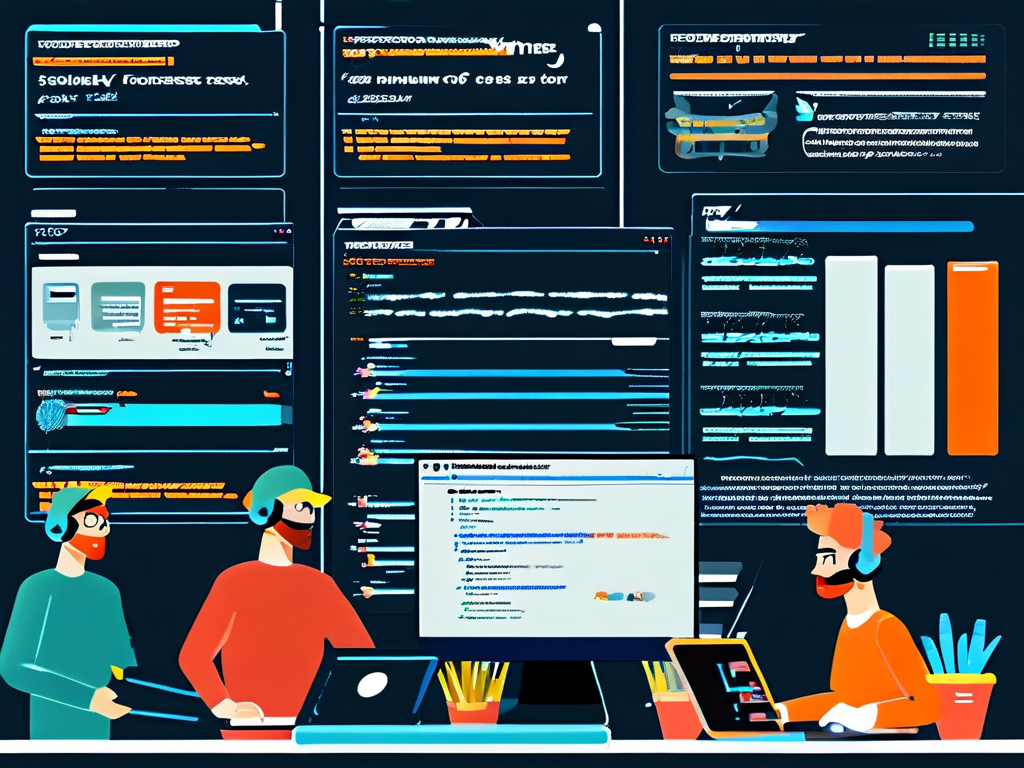In the fast-paced world of software development, automated deployment dashboards have emerged as a cornerstone of efficient DevOps practices. These interfaces bridge the gap between complex deployment pipelines and human oversight, enabling teams to visualize, monitor, and optimize workflows with unprecedented clarity. This article explores the significance of automated deployment dashboards, their core functionalities, design principles, and their transformative impact on modern development cycles.

The Rise of Automated Deployment
Automated deployment has revolutionized how software reaches production. By replacing manual processes with scripts, tools like Jenkins, GitLab CI/CD, and Kubernetes have reduced human error and accelerated release cycles. However, as deployment pipelines grew in complexity—spanning multiple environments, microservices, and cloud platforms—the need for visual management tools became apparent. Enter automated deployment dashboards: centralized interfaces that translate technical workflows into digestible visuals.
Key Features of Deployment Dashboards
- Pipeline Visualization: Dashboards map multi-stage deployment processes (e.g., build, test, staging, production) into flowcharts or timelines. Teams instantly grasp pipeline status, bottlenecks, and dependencies.
- Real-Time Monitoring: Metrics like deployment frequency, failure rates, and rollback success are displayed in real time. Color-coded alerts highlight issues, such as a failed build or resource overconsumption.
- Log Integration: Clickable logs and error traces are embedded directly into the interface, eliminating the need to switch between terminal windows and dashboards.
- Role-Based Access Control (RBAC): Dashboards often include permissions to ensure only authorized users trigger deployments or modify configurations.
- Historical Analytics: Teams analyze trends over time, such as deployment success rates per environment or the impact of specific code changes.
Design Principles for Effective Dashboards
Creating an intuitive deployment dashboard requires balancing technical depth with usability:
- Simplicity Over Clutter: Prioritize critical metrics (e.g., deployment status, recent failures) while hiding advanced settings behind collapsible menus.
- Customizability: Allow users to rearrange widgets or create personalized views for specific projects or roles.
- Cross-Platform Compatibility: Ensure dashboards integrate with diverse tools (e.g., GitHub Actions, AWS CodeDeploy) and display hybrid cloud/on-premises workflows.
- Actionable Insights: Buttons for common actions—like rolling back a deployment or retrying a failed test—should be accessible within the interface.
Challenges in Dashboard Implementation
Despite their benefits, deploying these dashboards presents challenges:
- Data Overload: Aggregating data from disparate sources (e.g., logs, metrics, version control) risks overwhelming users. Smart filtering and AI-driven anomaly detection can mitigate this.
- Security Risks: A centralized dashboard becomes a high-value target for attackers. Robust encryption, audit trails, and zero-trust authentication are essential.
- Tool Fragmentation: Organizations using multiple deployment tools may struggle to unify their dashboards. Open-source solutions like Grafana or commercial platforms like Harness offer middleware to consolidate data.
Case Study: Streamlining Enterprise Deployments
A Fortune 500 company migrated to a microservices architecture but faced deployment chaos due to siloed teams and inconsistent monitoring. By implementing a unified automated deployment dashboard, they achieved:
- 40% faster incident resolution via real-time error tracking.
- 30% reduction in deployment failures through predictive analytics flagging risky code merges.
- Improved cross-team collaboration with shared visibility into pipeline status.
The Future of Deployment Dashboards
Emerging trends are reshaping these interfaces:
- AI-Powered Insights: Machine learning models will predict deployment outcomes, recommend optimizations, and auto-resolve common errors.
- Low-Code Customization: Non-technical users will design dashboards via drag-and-drop interfaces, reducing reliance on DevOps engineers.
- Multi-Cloud Orchestration: As hybrid cloud adoption grows, dashboards will unify deployments across AWS, Azure, Google Cloud, and edge networks.
Automated deployment dashboards are more than just monitoring tools—they are strategic assets that empower teams to deliver software faster and more reliably. By translating technical complexity into actionable visuals, these interfaces foster collaboration, reduce downtime, and align DevOps practices with business goals. As technology evolves, the next generation of dashboards will further blur the line between human intuition and machine efficiency, cementing their role as indispensable tools in the developer’s toolkit.










